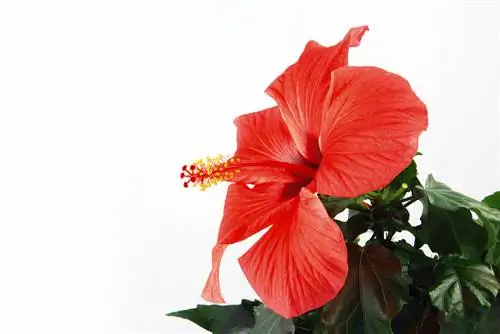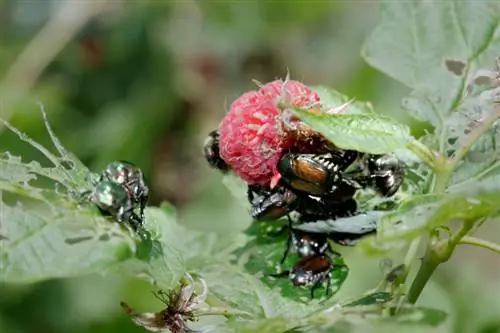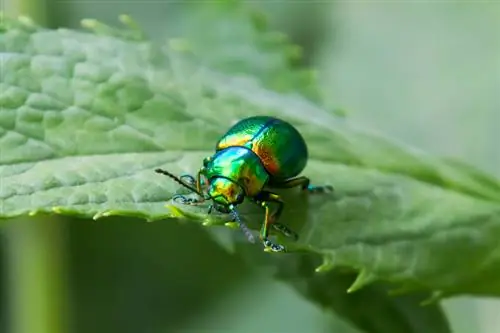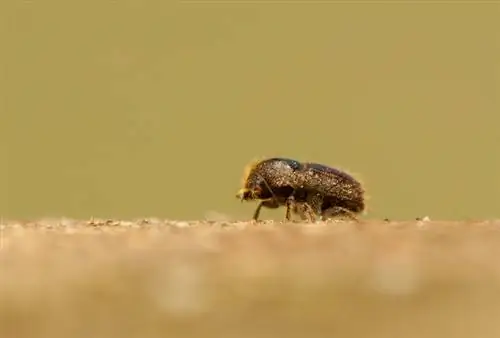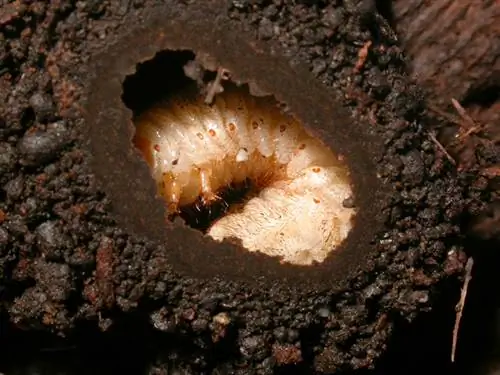- Author admin [email protected].
- Public 2023-12-16 16:46.
- Last modified 2025-01-23 11:20.
Common beech hedges are very robust. Nevertheless, severe infestations by pests occur here more often. While older hedges cope well with pest infestations, the insects can cause serious damage to young trees. How to recognize pests and combat them effectively.
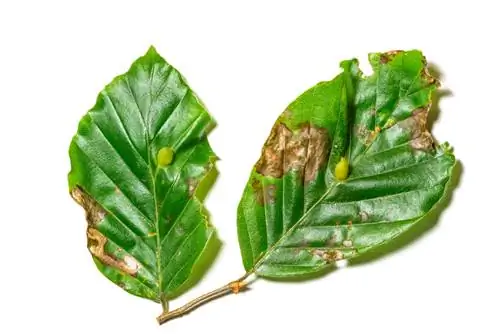
Which pests can attack beech hedges?
The most common pests on beech hedges include the whitefly, the hornbeam spider mite and the beech mealybug. In the event of an infestation, yellow tablets, rapeseed oil-water mixtures or nettle broth can help. In addition, infected plant parts should be removed and beneficial insect hotels should be hung up.
Which pests often appear on beech hedges?
There are three main pests that cause problems for a beech tree, especially a young tree or a freshly planted hedge:
- Whitefly
- hornbeam spider mite
- Beech mealybug
Basically, you should check the beech trees regularly for pests. You have to act at the latest when the hedge turns brown, the leaves curl up and fall off.
Whiteflies sit on the undersides of leaves or hover around the bushes. Spider mites cover the leaves with a fine web. The beech mealybug also occasionally has small wings and is therefore often confused with the whitefly. But it stays on the page. Lice excrete a sticky coating called honeydew. This allows you to clearly identify the type of pest.
Fighting whiteflies and spider mites
Whiteflies and spider mites are not that dangerous. Whiteflies can be caught with yellow plates (€5.00 on Amazon); You can treat spider mites with a mixture of 3 parts water and 1 part rapeseed oil. A little detergent causes the two to mix together.
Measures against the beech mealybug
The beech mealybug is protected from most insecticides by honeydew. The rapeseed oil-water mixture is also effective against these pests. Stinging nettle broth is also effective against the fluffy white insects.
It is important that the entire plant is sprayed carefully. This is especially true for the undersides of the leaves, where the lice often settle.
Dispose of trimmings and fallen leaves safely
If there is a slight pest infestation, it can help to cut off affected parts of the plant. In any case, you should carefully rake up the fallen leaves.
Dispose of leaves and clippings in the trash can or burn them if this is allowed where you do. Under no circumstances may they be used on compost or as mulching material for fertilization.
Tip
Create good conditions in the garden for beneficial insects that destroy pests on beech hedges. These include lacewings, ladybirds and hoverflies. A good option is to hang so-called insect hotels near the beech hedge.


